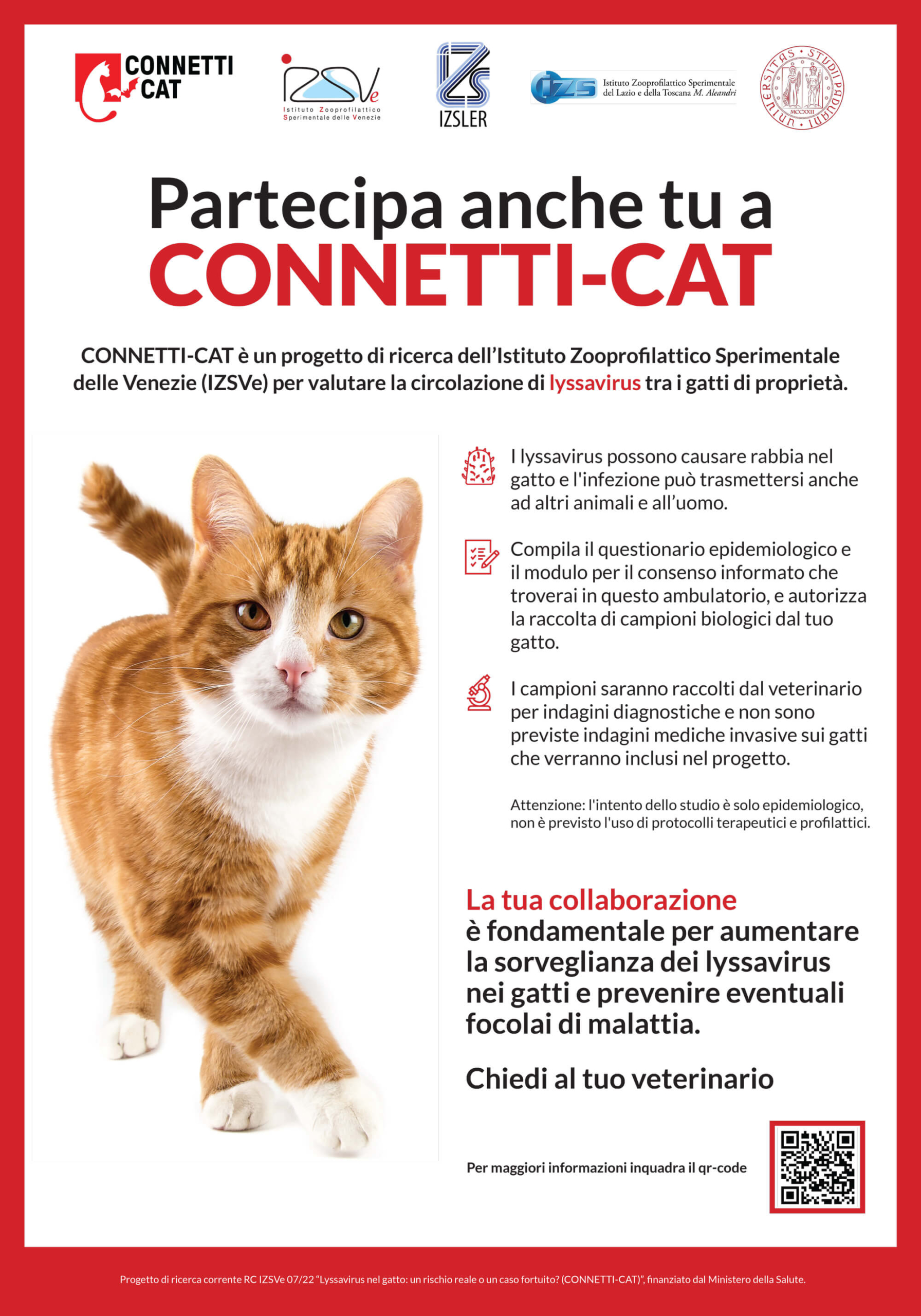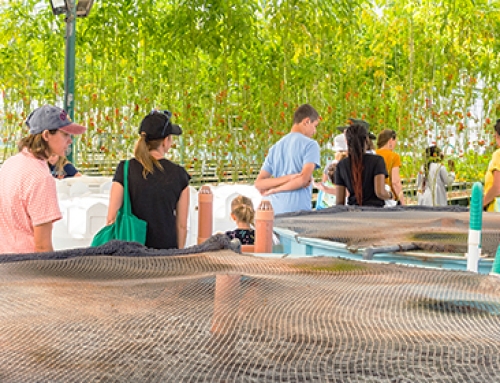The Istituto Zooprofilattico Sperimentale delle Venezie (IZSVe) has launched a research project entitled CONNETTI-CAT (RC IZSVe 07/22) designed to assess exposure to lyssaviruses in owned cats. The project is funded by the Italian Ministry of Health in collaboration with the Department of Animal Medicine, Production and Health of Padova University and the Veterinary Health and Research Organizations for Animal Health and Food Safety (IZS) of Lombardy-Emilia Romagna and Lazio-Tuscany. It will run for two years.

CONNETTI-CAT is a research project designed to assess exposure to lyssaviruses in owned cats, funded by the Italian Ministry of Health and led by the IZSVe in collaboration with the Department of Animal Medicine, Production and Health of Padova University and the Veterinary Health and Research Organizations for Animal Health and Food Safety (IZS) of Lombardy-Emilia Romagna and Lazio-Tuscany.
The CONNETTI-CAT project stems from the case of West Caucasian Bat Lyssavirus (WCBV), reported in June 2020 in Arezzo in a domestic cat presenting with neurological symptoms consistent with rabies. It is an example of a virus which has jumped species from bat to cat.
The objectives of the project are to:
- increase surveillance of lyssaviruses in cats accessing veterinary facilities with neurological symptoms associated with acute encephalomyelitis, by providing diagnostic support to clinical practice;
- define the exposure to lyssaviruses of cats accessing veterinary facilities, by means of targeted epidemiological investigations involving both cats with acute encephalomyelitis-related neurological symptoms and asymptomatic cats;
- characterize the study pathogens circulating in owned cats, by analysing the identified viral sequences and characterizing serological reactivity towards known lyssaviruses in cats;
- promote correct healthcare and relational management of cats through training and communication campaigns to lay the foundations for outbreak prevention and early warning system activation.
Considering the dearth of available knowledge and the serious consequences of this infection, it is crucial to determine the probability and estimate the actual circulation of these infections in the cat population, in addition to the virus’ capacity for secondary transmission to other animals and humans.
Through the collaboration of veterinary practitioners specializing in pets, who have joined the scheme on a voluntary basis, updated data will be collected on the presence and clinical characteristics of a lyssavirus infection and an assessment made of the presence of specific immunity in owned cats, indicative of previous exposure.
The project envisages the collection of biological samples previously collected from pets for diagnostic purposes. Since the aim of the study is purely epidemiological, no therapeutic or prophylactic protocols have been defined.







